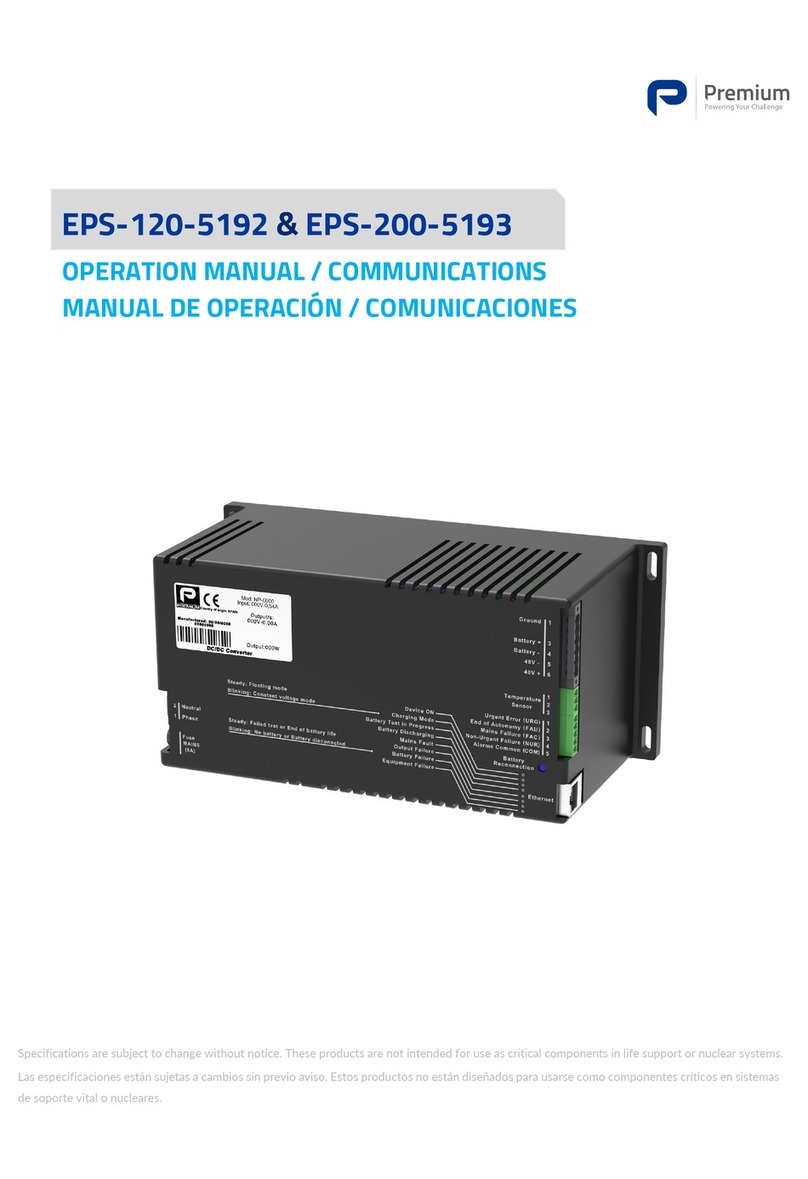
Serie EPS
Manual de Operación
MA-5192A-1
20-10-2021
5 / 84
Powering Your Challenge
1. WARNINGS:
In order to prevent accidents and injuries, the following safety instructions must be observed when using
our equipment.
For your own safety, you must have read and understood the relevant safety instructions before working with
the device.
Keep the safety instructions in a place that is accessible to anyone who works with the equipment, so that
they can refer to them.
Our equipment may only be used by personnel who are trained and authorized.
Error messages. These must be observed under all circumstances, and the cause must be located and
eliminated.
Warnings about hazards. When using the device or accessing its interior, any parts that are live represent
a potential hazard.
Voltage in general. The device operates with a maximum voltage of 230 VAC. This voltage is dangerous and
may cause injury to anyone who comes into contact with conductive parts of the device.
In particular, live parts inside the equipment are regarded as hazardous areas. This may refer to the following:
several soldering points, printed conductors, terminals for mains connection, relay contacts, etc. Before
opening the device, disconnect all poles from the mains voltage.
External voltages. When disconnecting a device, it is also necessary to consider possible external voltages,
and the return of the powered device.
Fuses. Only original fuses must be used, depending on the equipment.
Use in accordance with the intended purpose. The device may only be used for its intended purpose. Any
use that is not in accordance with this purpose is prohibited. PREMIUM S.A. cannot be held liable for damages
resulting from use that is not in accordance with the intended purpose. In this case, the user must assume
sole responsibility for the risk. Uses that are in accordance with this purpose are defined in the documentation.
The device may only be exposed to permissible environmental influences. These influences are specified in
the technical data for the device.
Prohibition of arbitrary modifications. The device must not be modified, in terms of its construction or
safety technology, without our express consent. We cannot accept liability for damage caused by any
modifications that are made. In particular, any repair work, soldering on printed circuit boards or replacement
of components, modules or printed circuit boards is forbidden without the express authorization of
PREMIUM S.A. If using spare parts, only original PREMIUM S.A. parts must be used. PREMIUM S.A. declines
all liability resulting from inappropriate, negligent or incorrect installation of the device, or from incorrectly
connecting the device.
As a result of the continuous improvement policy, the contents of this manual may change without notice.




























